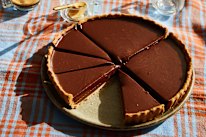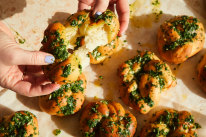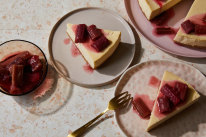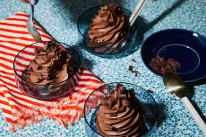Emelia Jackson’s step-by-step guide to making the perfect sweet tart pastry (and the secret to avoiding a soggy bottom)
How to line the tin and blind-bake the pastry shell
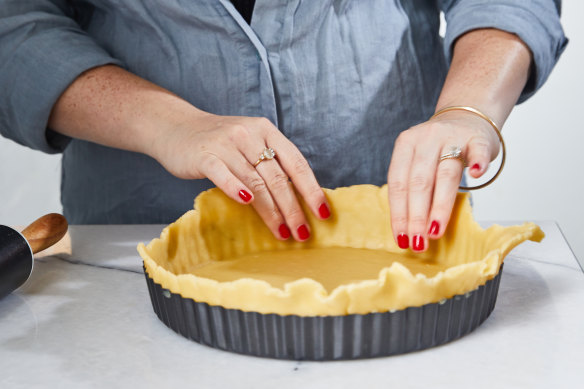
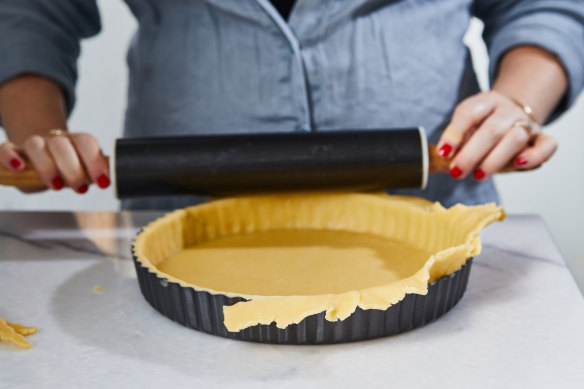
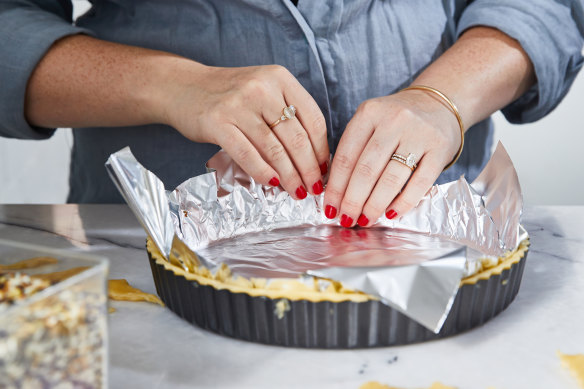
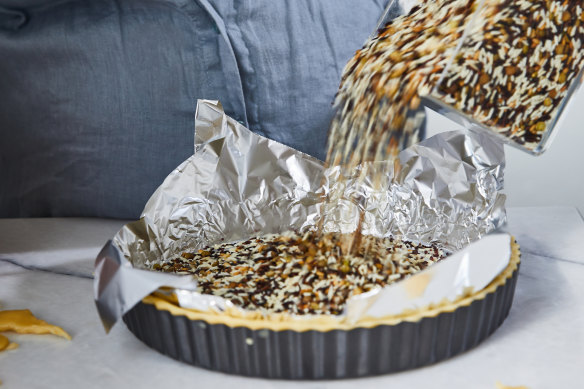
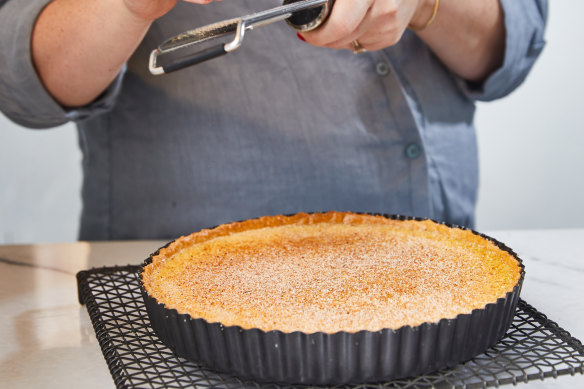

I love using this pastry for all of my sweet tart bakes. While it can be more difficult to work with than a shortcrust pastry, it is buttery and rich and can handle a teeny bit of kneading to bring it together. The best part? The ingredients don’t have to be ice-cold like a traditional shortcrust, so it’s a little more foolproof.
Technique of the month: Reducing soggy tarts
When your tart shell has been baked blind and is still hot from the oven, brush the piping-hot shell with an egg yolk wash (1 egg yolk mixed with 2 tablespoons of water). This will do two things: firstly, it will seal any cracks you might have in your tart shell, which will stop your filling from leaking out. Secondly, it will create a barrier between the tart shell and the filling – no more soggy bottoms on your finished tarts! The residual heat from the hot tart shell will cook the yolk, so simply brush it on in a couple of layers and allow it to chill completely.
Ingredients
Pastry shell
180g unsalted butter
100g icing sugar
1 tsp vanilla bean paste
pinch of salt
70g egg yolks (about 4)
300g plain flour
1-2 tbsp water
egg wash
1 egg yolk
2 tbsp water
Method
Step 1
In a stand mixer fitted with a paddle attachment, add the butter, sugar, vanilla, and salt. Mix these ingredients together for 2 minutes – we aren’t looking to cream them here, just combine the ingredients so that no big lumps of butter remain. You may need to scrape the bowl down a couple of times.
Step 2
Add in the egg yolks and mix for another minute to bring the ingredients together. Finally, add the plain flour and water and mix until the dough comes together. Mix for a further 2-3 minutes until the dough is cohesive.
Step 3
Turn the dough out onto your benchtop and using your hands, bring it together into a ball. Divide the dough in half, roll and flatten each ball of pastry out to make a disc. If you only need one, wrap one in cling film and refrigerate for 1-2 hours (preferably overnight) and freeze the other between two sheets of baking paper, then wrap well in cling film. (You’ll thank yourself later.)
Step 4
Once the pastry has chilled, remove it from the fridge and place it onto a lightly floured benchtop. You may need to knead it slightly to bring it back to a pliable consistency and to ensure the temperature of the dough is even throughout. Roll it out to 2-3mm thick and about 5cm larger than the tart tin.
Step 5
Drape the pastry over your rolling pin and gently lower it into the tin, pressing the pastry into the edges. Trim away excess pastry by running a rolling pin over the tart tin. Reserve any leftover pastry. Chill for 10-20 minutes before baking.
Step 6
Preheat the oven to 180C fan-forced (200C conventional).
Step 7
Line the pastry with baking paper or foil and weigh down with rice/lentils or baking beads. Bake the tart shell for 10-15 minutes, then remove the baking paper and baking weights. Return to the oven and continue to bake for a further 15 minutes, or until it is a beautiful, even golden brown.
Step 8
If you find any little holes in your pastry case, patch them with leftover pastry and return the tart tin to the oven for 2 minutes.
Step 9
Make the egg wash by mixing the yolk and water together in a small bowl. Evenly brush the egg wash onto the hot pastry surface. The residual heat from baking will cook the yolk wash and seal the pastry.
Allow to cool completely before filling.
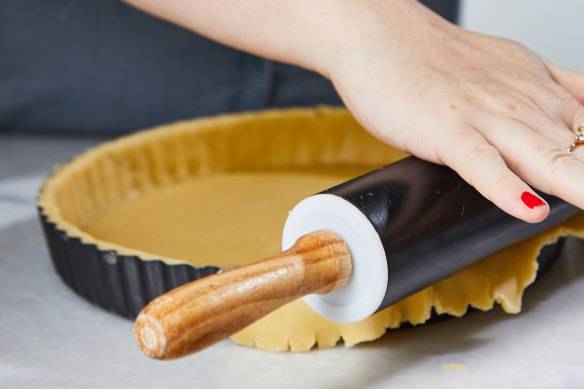
Tips
- Knead this dough together a little longer than instinct tells you to – while this will lead to a slightly “tougher” pastry, it will ensure that it is not too crumbly to work with.
- Roll the dough out thinner than you might usually do – we are looking for a 2-3mm thickness here, although I am not the type of baker to get my ruler out in the kitchen! The thinness of the pastry will guarantee it is tender and short.
- Rolling the dough out between two pieces of baking paper will ensure you don’t add any extra flour to the pastry, which affects the texture. It will also make it easier to handle and get into your tart tin.
- This recipe makes enough for two 23cm tart shells. If you only need one, I recommend rolling the remaining pastry between two sheets of baking paper, then in cling film. It can be frozen for 6-8 weeks. To use from frozen, transfer to the fridge to thaw completely.
This has been edited to add that 70g of egg yolks is about four yolks. For accuracy, it’s best to weigh them. The butter should be cold but does not need to be ice-cold.
Appears in these collections
The best recipes from Australia's leading chefs straight to your inbox.
Sign upFrom our partners
Similar Recipes
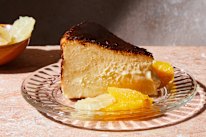
Watch for the wobble: The secret to a perfectly creamy, yet caramelised, Basque cheesecake
- 30 mins - 1 hr
- Emelia Jackson
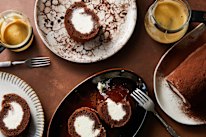
‘Simply irresistible’: The secret to a perfect, crack-free chocolate Swiss roll
- 30 mins - 1 hr
- Emelia Jackson
More by Emelia Jackson

‘Simply irresistible’: The secret to a perfect, crack-free chocolate Swiss roll
- 30 mins - 1 hr
- Emelia Jackson

